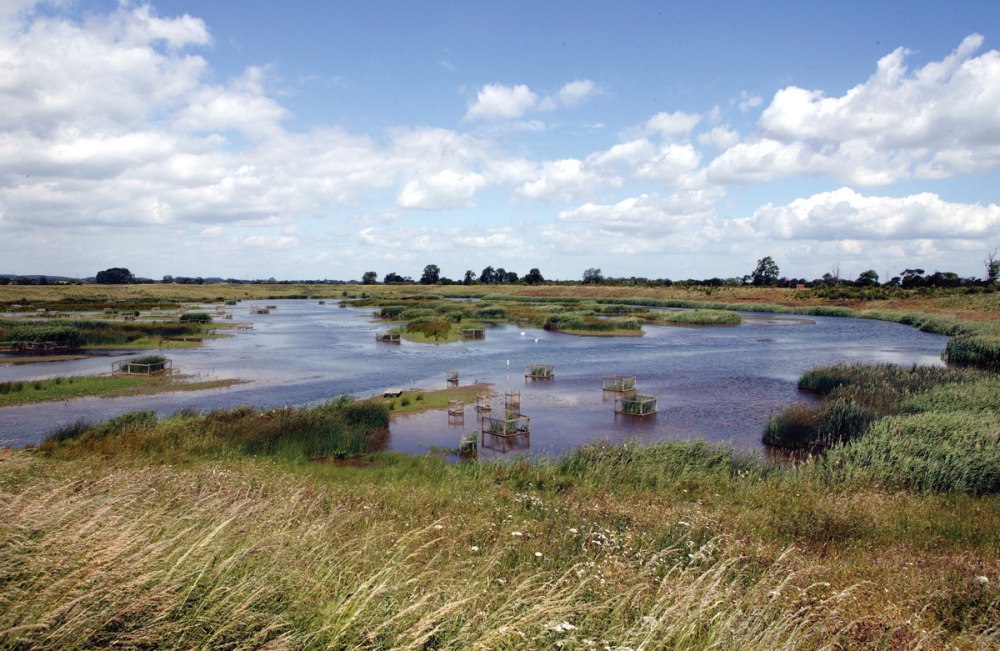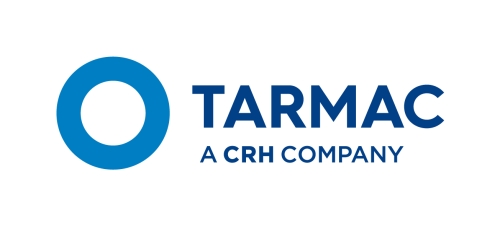environmental stewardship
“It is important to us that we carry out sustainable mineral extraction and restoration at the sites we operate, so receiving recognition from industry awards really does reinforce the work we do when it comes to biodiversity and restoration.”
Stuart Wykes - director of land and natural resources
highlights
Our core business is quarrying natural resources and making them into essential products such as concrete, asphalt, cement and lime. These products are vital for creating the homes, schools, hospitals, transport infrastructure, clean water, sanitation and energy on which we all rely. We take pride in doing this in a responsible, safe and sustainable way, managing any impacts, while respecting and protecting the environment.
All environmental risks and impacts of our activities on the surrounding environment and local communities are assessed and we ensure compliance with all legislation and operate to and drive industry best practice. Our Environmental Management System (EMS) is central to our approach, and we have ensured that all our operational sites are certified to ISO 14001 Environmental Management Systems Standard.
Continuous improvement is fundamental to an effective EMS and we constantly look for ways to improve our environmental performance, including how we document it. This year, we will re-invent the procedures, tools and guidance used by our staff to make environmental management intuitive and transparent. We are also strengthening our audit and inspection processes to ensure we identify any areas of risk and implement improvements across all our activities.
To manage our energy consumption and minimise CO2 emissions, we have an Energy Management System certified to ISO 50001 Energy Management System Standard for all our operational sites, offices and depots to guide us in identifying opportunities to become more energy efficient.
We report all incidents that occur on site, no matter how minor and welcome feedback on operations from members of the public and other interested parties. We ensure thorough investigations are conducted and, where appropriate, make changes to our operations to prevent reoccurrence
At our cement and lime plants we employ the best available technology to manage and minimise emissions to the atmosphere. We have made significant reductions in these emissions since 2000, our baseline year. One of our emission monitoring technicians, Paul Firth, has been recognised for ‘going the extra mile’ in the field of emissions monitoring. Paul has received an industry Individual Recognition Award, endorsed by trade body the Source Testing Association (STA). Paul was nominated to receive the award as an acknowledgement of the contribution he has made to environmental awareness and sharing best practice.
Cement emissions 2019
| Unit | Particulates | Sulphur Dioxide (SO2) | Oxides Of Nitrogen (as NO2) |
|---|---|---|---|
| Tonnes | 79 | 852 | 2226 |
| kg/tonnes PCe | 0.04 | 0.4 | 1.05 |
| % reduction compared to 2000 | -93% | -92% | -64% |
Lime 2019
| Unit | Particulates | Sulphur Dioxide (SO2) | Oxides Of Nitrogen (as NO2) |
|---|---|---|---|
| Tonnes | 15 | 24 | 71 |
| kg/tonnes CaO | 0.03 | 0.05 | 0.15 |
| % reduction compared to 2000 | -96% | -95% | -45% |
* PCe – Portland cement equivalent, a standard industry normalising factor representing the tonnes of Portland cement manufactured from a tonne of cement clinker.
** CaO – Quicklime
Enhancing and restoring biodiversity
Our approach to enhancing biodiversity focuses on providing a lasting legacy - improving the biodiversity value of our assets compared to the situation before mineral extraction began. Each of our operational quarry sites has a biodiversity management plan or site mineral restoration plan, often produced in collaboration with regulators and wildlife bodies such as; The Wildlife Trusts, Royal Society for the Protection of Birds (RSPB) and community groups. These plans, guide our approach in managing biodiversity at a local level and help to ensure that opportunities to support, enhance and create biodiversity are taken throughout the operational life of a site.
At the end of their life our sites are often returned to their original use, such as agriculture, while others may be transformed into nature reserves and wetland habitats. Land may also be returned to the community for recreational use, and in other circumstances, sites may be used to support local jobs through industrial or retail use or to provide much needed housing.

In order to help maximise the biodiversity at the sites that we restore and manage, we work in partnership with local wildlife trusts and organisations invested in protecting the environment.
In 2019, we celebrated our working partnership with the Langdyke Trust by sponsoring their 20th anniversary celebrations. The event was hosted at our Maxey Reserve, located at Maxey quarry, where we are working in partnership with Langdyke Trust to manage the biodiversity on the site.
Over the last 7 years Tarmac has developed successful partnership with Cranfield University. MSc students from the university have completed group projects and Thesis’ alongside Tarmac to help us solve real world restoration issues and developing best practice. The focus for 2019 was to trial and evaluate of the Defra Biodiversity Metric 2.0 on sand and gravel quarries, an important step in helping us access our positive impact on the environment.
We are also supporting the ‘Transforming the Trent Valley’ (TTTV) project, which aims to revitalise landscapes of wildlife-rich waterways and wetlands. A partnership of 18 organisations will be working together to restore and enhance the natural and cultural heritage of the Trent Valley, with Staffordshire Wildlife Trust leading the project.
This year our restoration teams have received recognition for the work completed to restore and enhance biodiversity at our sites. We were awarded the Restoration Award, at the annual European Aggregates Association (UEPG) Sustainable Development Awards 2019, for our restoration of Cloddach Quarry, sand and gravel quarry in Scotland and its mosaic of lakes, wetlands, islands, wet woodland and agriculture.
Tarmac’s Broom Quarry was named joint winner of the Cooper-Heyman Cup at the Mineral Products Association (MPA) Quarries and Nature 2019 prize giving ceremony, which bi-annually recognises achievement in restoration and biodiversity. We have been awarded this cup in previous years, which provides recognition of our commitment to sustainable land stewardship and to leaving a lasting legacy for wildlife and future generations.
For the third consecutive time a Tarmac employee has received recognition for their contribution towards Biodiversity at MPA Restoration Awards. Vaughan Gray, a foreman at Halecombe Quarry in Somerset received this year’s award
Our restored quarry at Panshanger has been in the limelight this year hosting the 5th annual Festival of Wildlife and was visited by BBC’s Countryfile to showcase the great work they have been doing at the site since 2003. Presenters’ Matt Baker and Sean Fletcher filmed the popular 1,000 acre park during a recent two-day visit to the restoration site. On the show they discussed our restoration work, our management of the site in partnership with the Wildlife Trust and, finally, the addition of longhorn cattle to help with low intensity grazing.
Our approach to environmental stewardship extends to playing an active role in supporting archaeological discoveries, as well as, conservation work. We facilitate a number of archaeological digs and investigations each year to determine if any important historical sites exist on our land.
Excavations at Tarmac’s Killerby quarry near Northallerton in North Yorkshire have uncovered the remains of two buildings, which could include the UK’s first example of a house in which the timbers used to construct it have survived. The rare findings have been discovered through a 10-year-long collaboration between Tarmac and Archaeology Research Services Ltd (ARS), which has seen extensive archaeological survey and excavation work undertaken prior to the quarry commencing operations. The remains are believed to be from the Mesolithic and Neolithic periods, which date to 12,000 and 6,000 years respectively.
